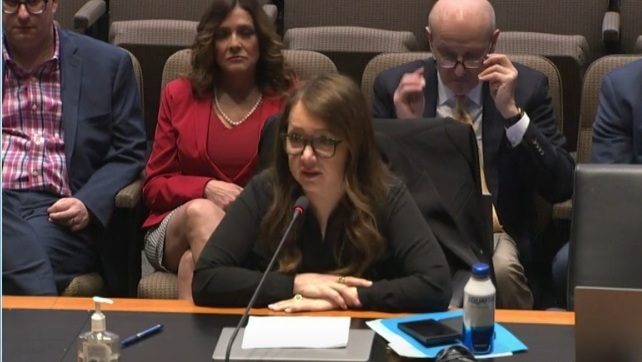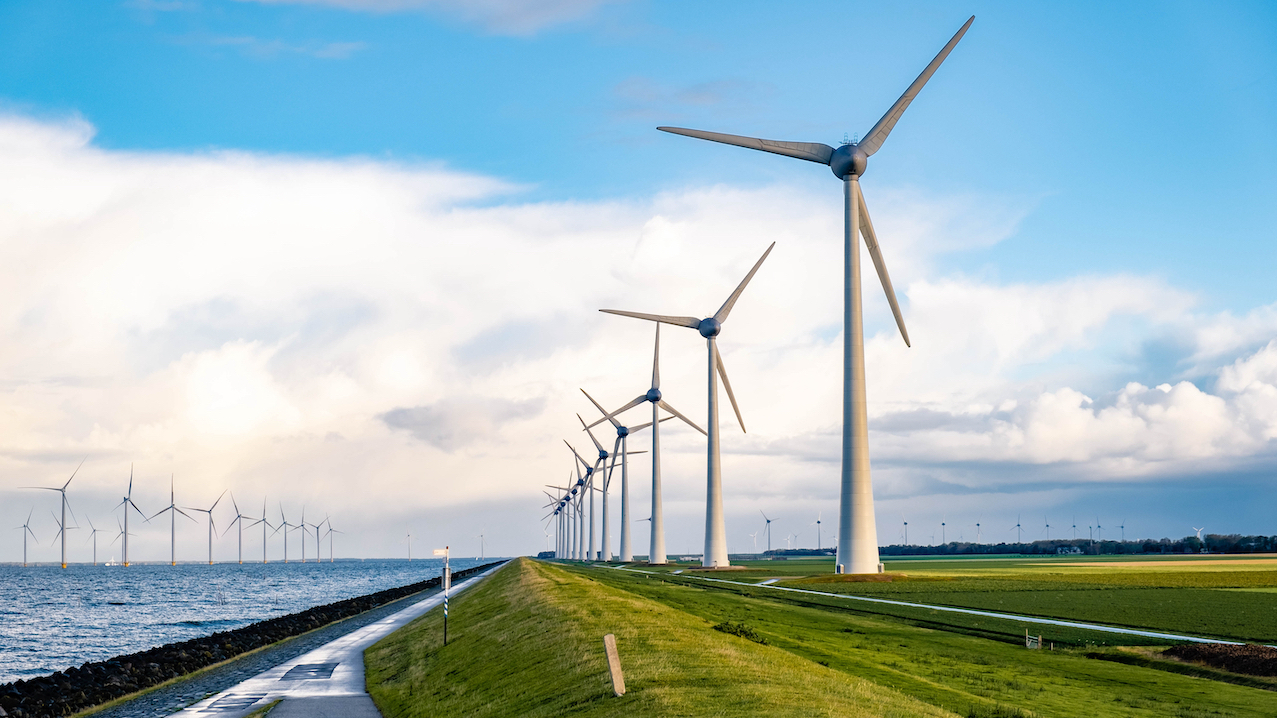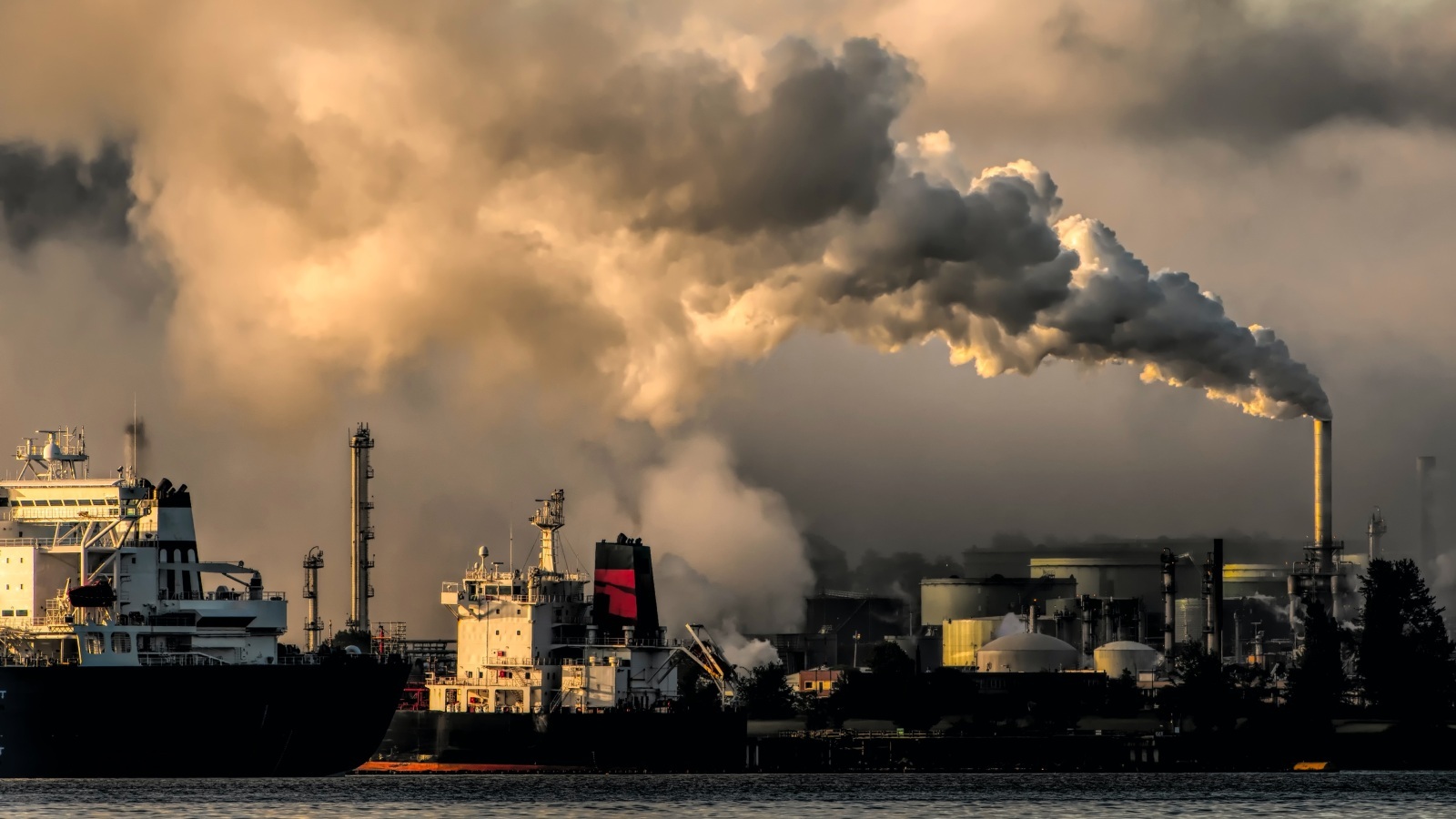
Hard numbers: Adair Turner on investors’ key net zero challenges
ETC chair Lord Adair Turner provides an in-depth insight in what he considers the key challenges for investors and businesses while transitioning to net zero
Industry insider Adair Turner, the current chair of the Energy Transitions Commission, has shared his insights on how investors can and should transition to a net zero future.
The former chairman of the Financial Services Authority provided his take during a recent event organised by management consultancy Eden McCallum.
If we cut through all the noise and ignore the details, what is the one fundamental thing that needs to happen to get to net zero?
Build much bigger electricity systems and electrify as much of the economy as possible. Direct use of electricity for final energy demand could go from 20% today to 60%-65% by 2050 or 2060. The system could grow from producing 30,000 terawatt hours to over 100,000 terawatt hours. The biggest investment has to be in building a bigger system for the generation, transmission and distribution of zero carbon electricity.

Obviously green energy tech, renewables and their financials play a key role.
Many of the technologies that will help us deal with net zero emissions challenges are roaring ahead at a great pace, at a faster pace than we dared to imagine ten years ago. In the last ten years we have seen dramatic falls in the cost of solar PV and wind energy. The cost of solar has come down by 80%-90%, onshore wind is 50%-60% cheaper, and offshore wind costs have collapsed.
Most analysts failed to foresee such falls in the cost of renewables and economies of scale and learning curves have a powerful effect.

As capacity to produce polysilicon (a key input to solar PV panels ) and to fabricate the cells and modules increases, the cost of PV panels falls.
The same has happened with the cost of batteries. A stretch target was set by the US Department of Energy over a decade ago – to get the cost of lithium ion batteries down to below $200 per kilowatt hour by 2020. By 2020 the price had fallen by 85%, to $137 per kwh. As a result, electric vehicles will get cheaper to purchase and run.

Meanwhile, as electrolysers get cheaper, green hydrogen can be produced much more cheaply as well.
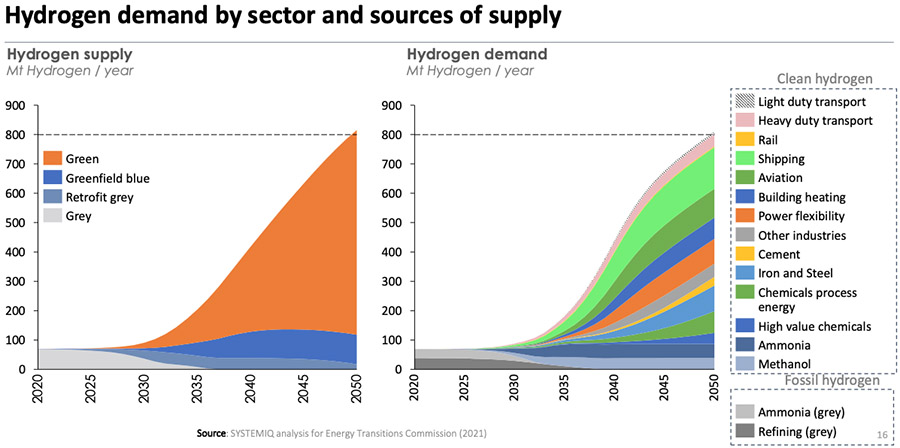
Building electricity systems are 80%-90% dependent on intermittent renewables, which will be cheaper to run than fossil fuel systems.
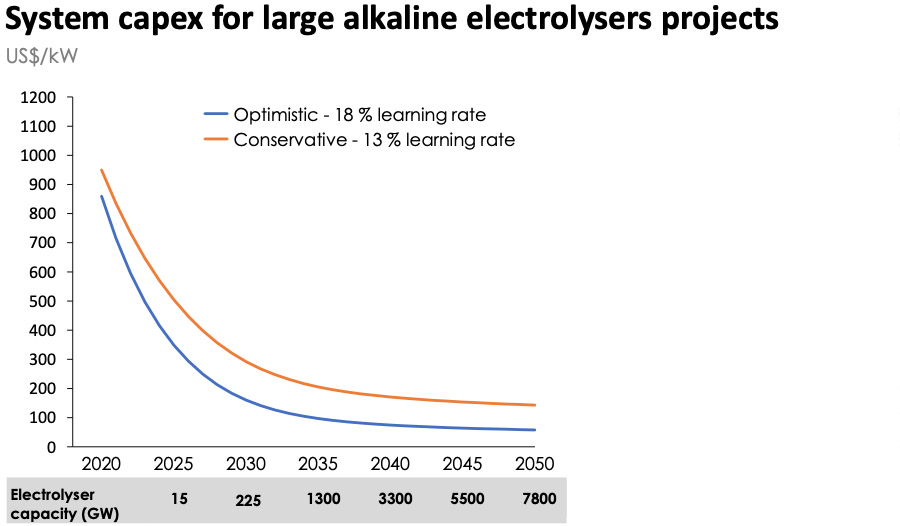
Obviously, some parts of the economy have a much more complex route to net zero, such as energy and aviation. What is the way forward for them?
It is possible to reach 2050 net zero targets in these industries with minimal use of offsets. In aviation, we think only 5% offsets will be required by 2050. This is achieved through greater fuel efficiency, battery electric and hydrogen electric power for shorter flights, but mainly through sustainable aviation fuel, either biofuel or synthetic fuel. IATA, the aviation trade body, supports and endorses this approach.

In steel, blast furnaces using coking coal will almost completely disappear by 2050. New technologies are emerging, using hydrogen as the reduction agent rather than coking coal.

In trucks, Volvo has developed an electric 40-tonne 16-metre truck with a 400 km range. In Europe a driver is not allowed to drive more at more than 95km per hour or for more than 3 hours 45 mins before taking a break, so a 400km range is sufficient if combined with a recharging time below 45 minutes. We can absolutely decarbonise road transport and trucking.
There is a lot of debate about the '1.5 degree' rule. Is it possible to prevent temperature rises of more than 1.5 degrees Celsius in the next five years?
If we can get the world to net zero emissions by around mid-century – which means the developed world getting there by 2050, and the developing world by 2060 – then there is still just a chance. But a lot of time has been lost as we did not move fast enough.
Hitting the targets requires very significant reductions (30%-40%) in carbon emissions in the 2020s. The Intergovernmental Panel on Climate Change (IPCC) has just published a report – a “final warning” in their words – which confirms this. We are well off target at the moment, heading for rises of over 2 degrees Celsius.

Are there particular sectors you are worried about?
There is no clear strategy about how we get to net zero in agriculture. Electric vehicles are a hugely efficient way of converting electricity into kinetic energy, but agriculture (especially livestock) is a hugely inefficient way of converting solar energy into food (calories). Solar farms are vastly more efficient than photosynthesis, and vastly more efficient than farming animals.
What can responsible businesses do?
First, have a clear plan to reduce your own emissions, internal to your own operations. Take that as close to zero as possible, by 2050 at the very latest. 95% of the reduction has got to be what you do internally, not the offsets that you buy and then the purchase of offsets can come on top of that.
Finally, what should be the key priority, economic growth or net zero?
In the past years, there has been a growing debate on how to position net zero vis a vis economic growth. Is economic growth per se a burden on the natural environment, so the answer has to be reduced consumption, or will technology solve everything and enable us to continue living as we do and for the developing world to increase its living standards.
In terms of the energy, building, industry and transport sectors, we do have a technological route to get to net zero, and once we get there, there aren’t really planetary boundaries to lithium supply, rare earth supply, the amount of land we need for solar or wind.
But even in those sectors we can’t get there fast enough, so a responsible person will be doing a lot of things to reduce their emissions by behaviour change during the 2020s. The challenges we face are non-trivial, but absolutely solvable through a combination of applying technologies that exist today and adopting responsible consumption patterns.
Also read
Proxy season: Scope 3 emissions and sustainability dominate earning calls

